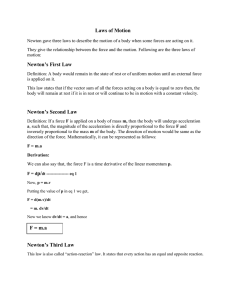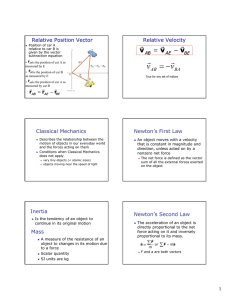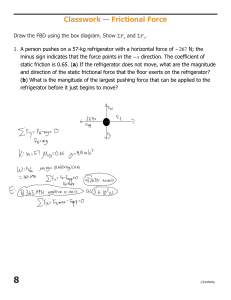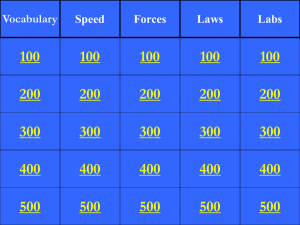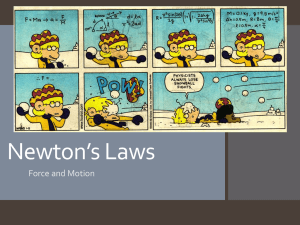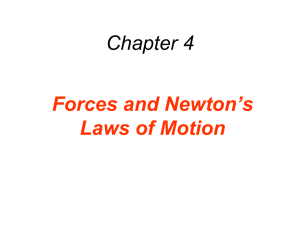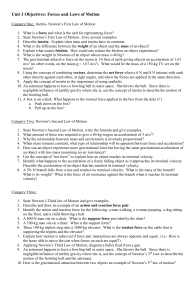Dynamics Fundamental Forces of Nature
advertisement
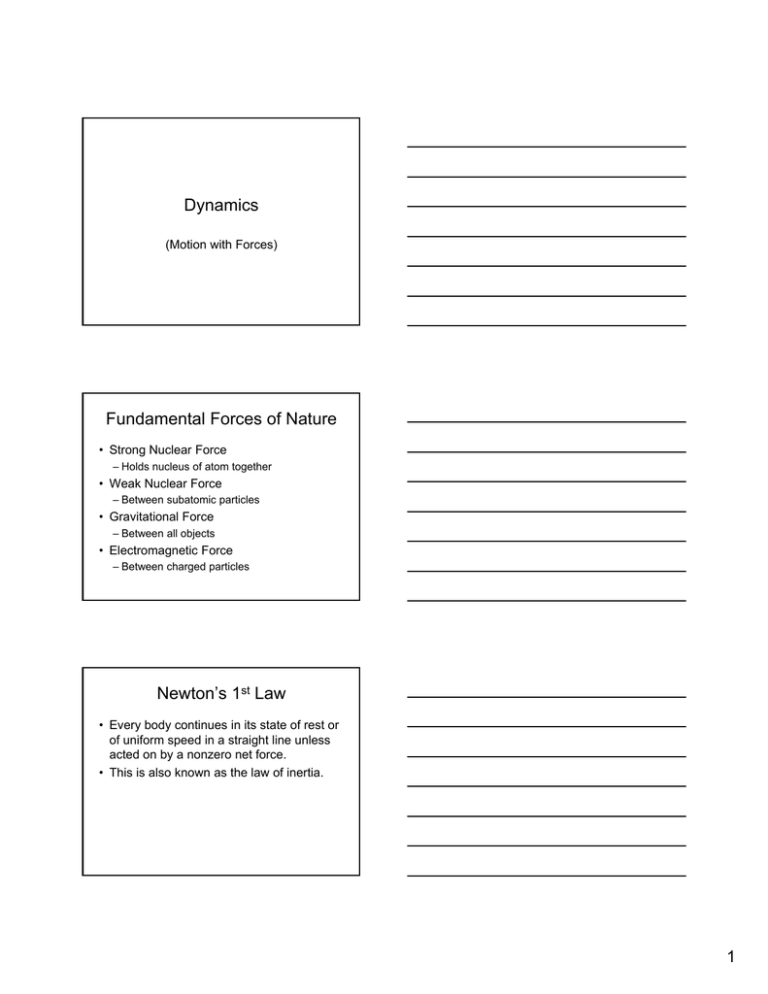
Dynamics (Motion with Forces) Fundamental Forces of Nature • Strong Nuclear Force – Holds nucleus of atom together • Weak Nuclear Force – Between subatomic particles • Gravitational Force – Between all objects • Electromagnetic Force – Between charged particles Newton’s 1st Law • Every body continues in its state of rest or of uniform speed in a straight line unless acted on by a nonzero net force. • This is also known as the law of inertia. 1 Newton’s 2nd Law • The acceleration of an object is directly proportional to the net force acting on it and is inversely proportional to its mass. The direction of the acceleration is in the direction of the net force acting on the object. F ma Newton’s 3rd Law • Whenever one object exerts a force on a second object, the second exerts an equal and opposite force on the first. Translational Equilibrium • An object is said to be in translational equilibrium if and only if the net force on the object is zero. • The vector sum of all the forces acting on the object is zero F F F x y z 0 2 Normal Force • A force normal (perpendicular) to the surface that an object is sitting on. • This force is due to Newton’s 3rd Law. Frictional Force • Force opposing the motion of an object on a surface. • The amount of frictional force depends on two things – Type of surfaces in contact with each other – The normal force Coefficient of Friction • The coefficient of friction is a value representing the types of surfaces in contact with each other • This value is different if the objects are moving or stationary • Symbol: μ 3 Calculating Frictional Force • The frictional force is proportional to the normal force on the object F f FN 4

